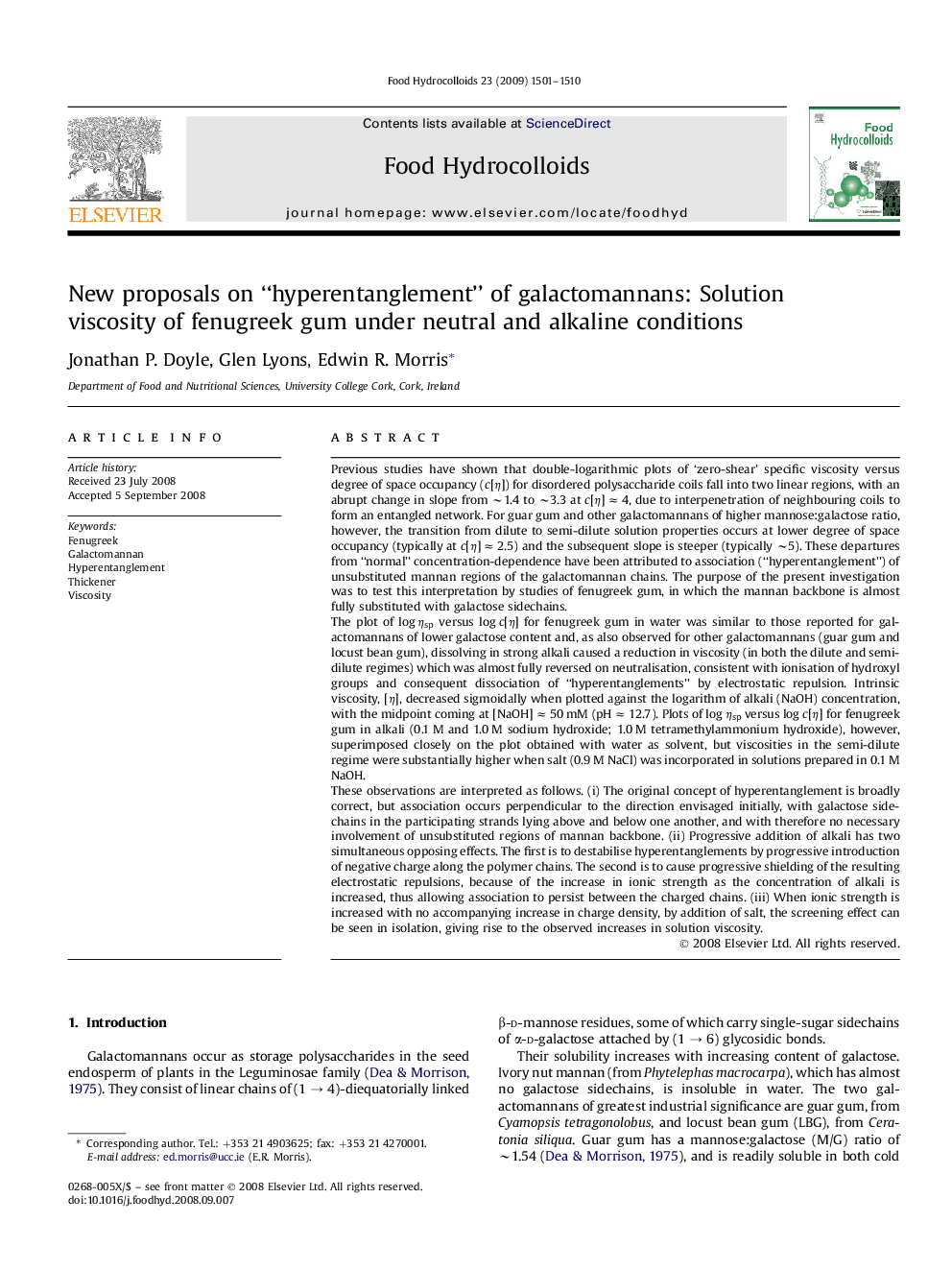| کد مقاله | کد نشریه | سال انتشار | مقاله انگلیسی | نسخه تمام متن |
|---|---|---|---|---|
| 604816 | 880324 | 2009 | 10 صفحه PDF | دانلود رایگان |

Previous studies have shown that double-logarithmic plots of ‘zero-shear’ specific viscosity versus degree of space occupancy (c[η]) for disordered polysaccharide coils fall into two linear regions, with an abrupt change in slope from ∼1.4 to ∼3.3 at c[η] ≈ 4, due to interpenetration of neighbouring coils to form an entangled network. For guar gum and other galactomannans of higher mannose:galactose ratio, however, the transition from dilute to semi-dilute solution properties occurs at lower degree of space occupancy (typically at c[η] ≈ 2.5) and the subsequent slope is steeper (typically ∼5). These departures from “normal” concentration-dependence have been attributed to association (“hyperentanglement”) of unsubstituted mannan regions of the galactomannan chains. The purpose of the present investigation was to test this interpretation by studies of fenugreek gum, in which the mannan backbone is almost fully substituted with galactose sidechains.The plot of log ηsp versus log c[η] for fenugreek gum in water was similar to those reported for galactomannans of lower galactose content and, as also observed for other galactomannans (guar gum and locust bean gum), dissolving in strong alkali caused a reduction in viscosity (in both the dilute and semi-dilute regimes) which was almost fully reversed on neutralisation, consistent with ionisation of hydroxyl groups and consequent dissociation of “hyperentanglements” by electrostatic repulsion. Intrinsic viscosity, [η], decreased sigmoidally when plotted against the logarithm of alkali (NaOH) concentration, with the midpoint coming at [NaOH] ≈ 50 mM (pH ≈ 12.7). Plots of log ηsp versus log c[η] for fenugreek gum in alkali (0.1 M and 1.0 M sodium hydroxide; 1.0 M tetramethylammonium hydroxide), however, superimposed closely on the plot obtained with water as solvent, but viscosities in the semi-dilute regime were substantially higher when salt (0.9 M NaCl) was incorporated in solutions prepared in 0.1 M NaOH.These observations are interpreted as follows. (i) The original concept of hyperentanglement is broadly correct, but association occurs perpendicular to the direction envisaged initially, with galactose sidechains in the participating strands lying above and below one another, and with therefore no necessary involvement of unsubstituted regions of mannan backbone. (ii) Progressive addition of alkali has two simultaneous opposing effects. The first is to destabilise hyperentanglements by progressive introduction of negative charge along the polymer chains. The second is to cause progressive shielding of the resulting electrostatic repulsions, because of the increase in ionic strength as the concentration of alkali is increased, thus allowing association to persist between the charged chains. (iii) When ionic strength is increased with no accompanying increase in charge density, by addition of salt, the screening effect can be seen in isolation, giving rise to the observed increases in solution viscosity.
Journal: Food Hydrocolloids - Volume 23, Issue 6, August 2009, Pages 1501–1510